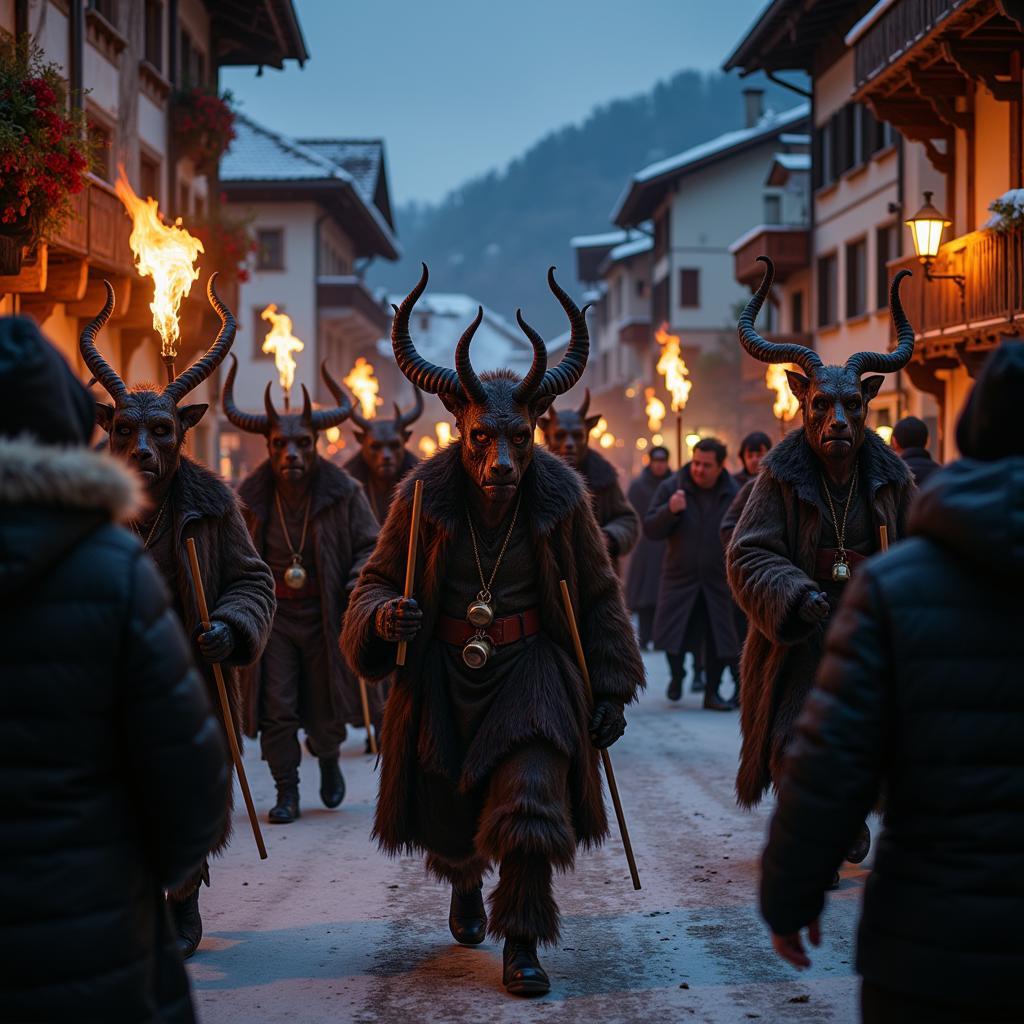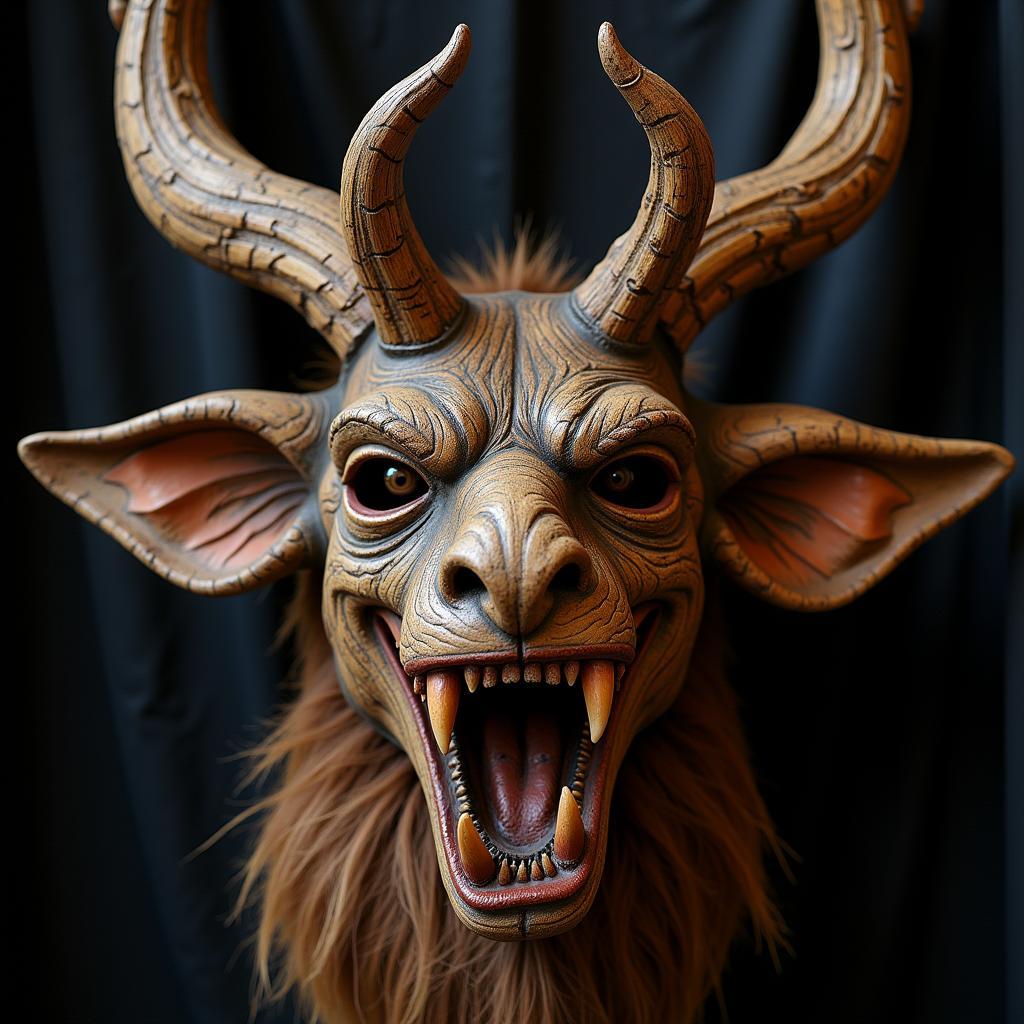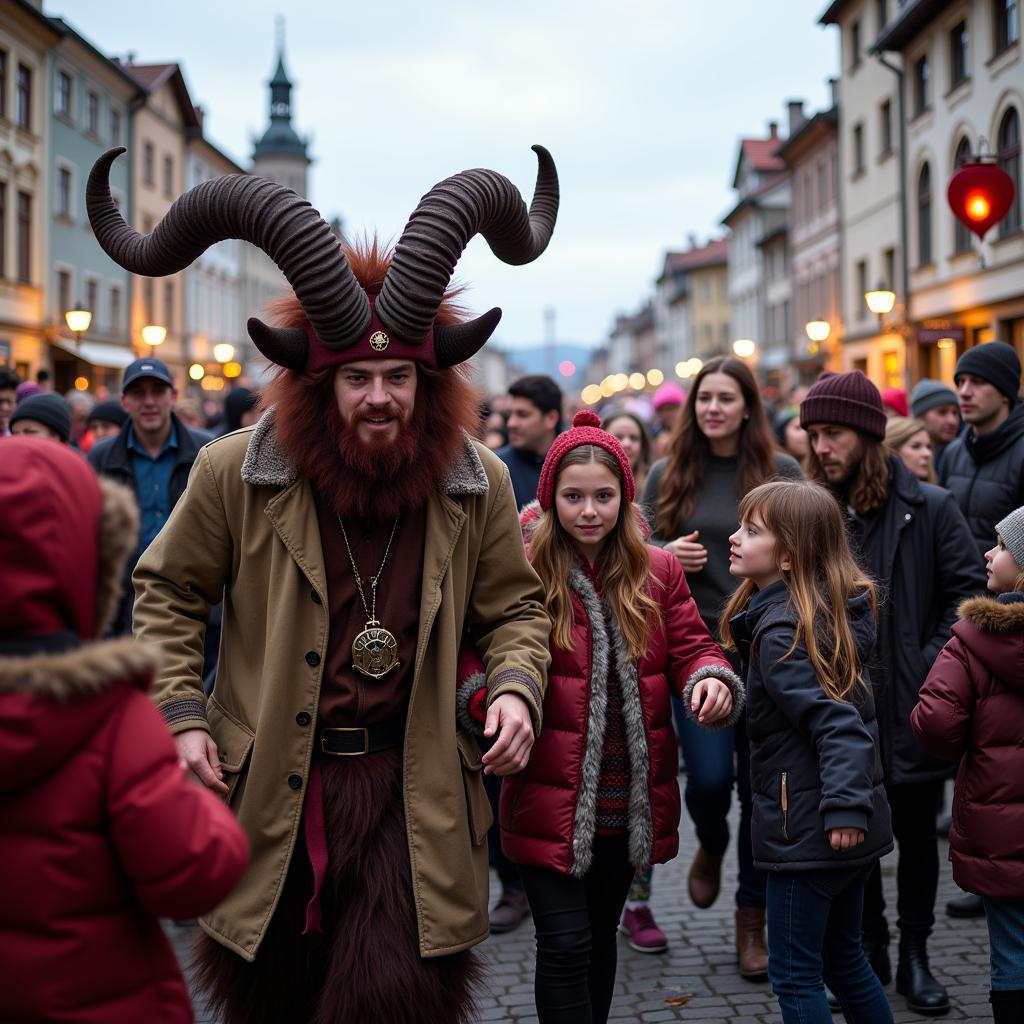The Krampus Society, a figure often shrouded in misunderstanding, offers a fascinating lens through which to explore cultural differences and promote cross-cultural understanding. While many associate the holiday season with joy and good cheer, the centuries-old tradition of the Krampus, a beast-like creature said to accompany St. Nicholas, adds a layer of complexity to festive celebrations in certain parts of the world.
 Traditional Krampus Procession in Austrian Village
Traditional Krampus Procession in Austrian Village
Beyond the Fearsome Facade: Understanding the Krampus
Originating in European folklore, particularly in Alpine regions like Austria and Germany, the Krampus serves as a stark counterpoint to the benevolent gift-giver, St. Nicholas. While St. Nicholas rewards well-behaved children, the Krampus is said to punish those who have misbehaved throughout the year. Often depicted with horns, fangs, and a long, pointed tongue, the Krampus carries chains and birch branches, signifying his role in dispensing punishments.
 Detailed Close-Up of a Krampus Mask
Detailed Close-Up of a Krampus Mask
However, the Krampus tradition is far from a simple tale of punishment. It reflects a deeper cultural understanding of the duality of life, the balance between light and darkness, good and bad. The Krampus, rather than being a figure purely to be feared, represents a tradition that encourages reflection and self-awareness. His presence serves as a reminder of the consequences of one’s actions and the importance of accountability.
Krampus in the Modern World: Cultural Preservation and Evolution
In recent years, the Krampus tradition has experienced a resurgence in popularity, extending beyond its traditional European roots and captivating audiences worldwide. Krampus festivals and parades, known as Krampuslauf, have become increasingly popular, drawing thousands of participants and spectators alike.
This renewed interest speaks to a broader fascination with folklore and cultural traditions, as well as a desire to connect with the past. Moreover, the Krampus, with his blend of fearsome appearance and underlying moral message, offers a unique and thought-provoking perspective on contemporary societal values.
 Modern Krampus Festival with Diverse Participants
Modern Krampus Festival with Diverse Participants
Building Bridges, Not Walls: The Krampus as a Catalyst for Dialogue
Exploring traditions like the Krampus offers a valuable opportunity to engage in meaningful dialogue about cultural differences and foster greater understanding between people of diverse backgrounds. By approaching cultural traditions with an open mind and a willingness to learn, we can challenge preconceived notions and embrace the richness that diversity brings to our world.